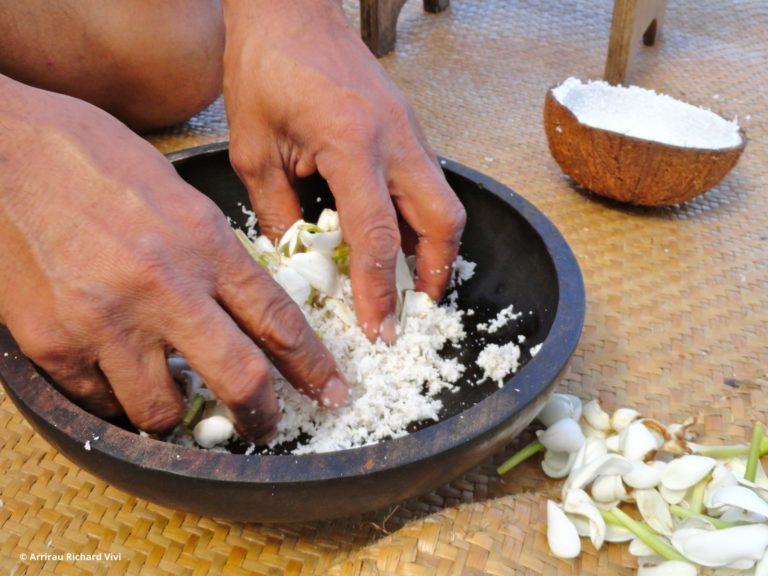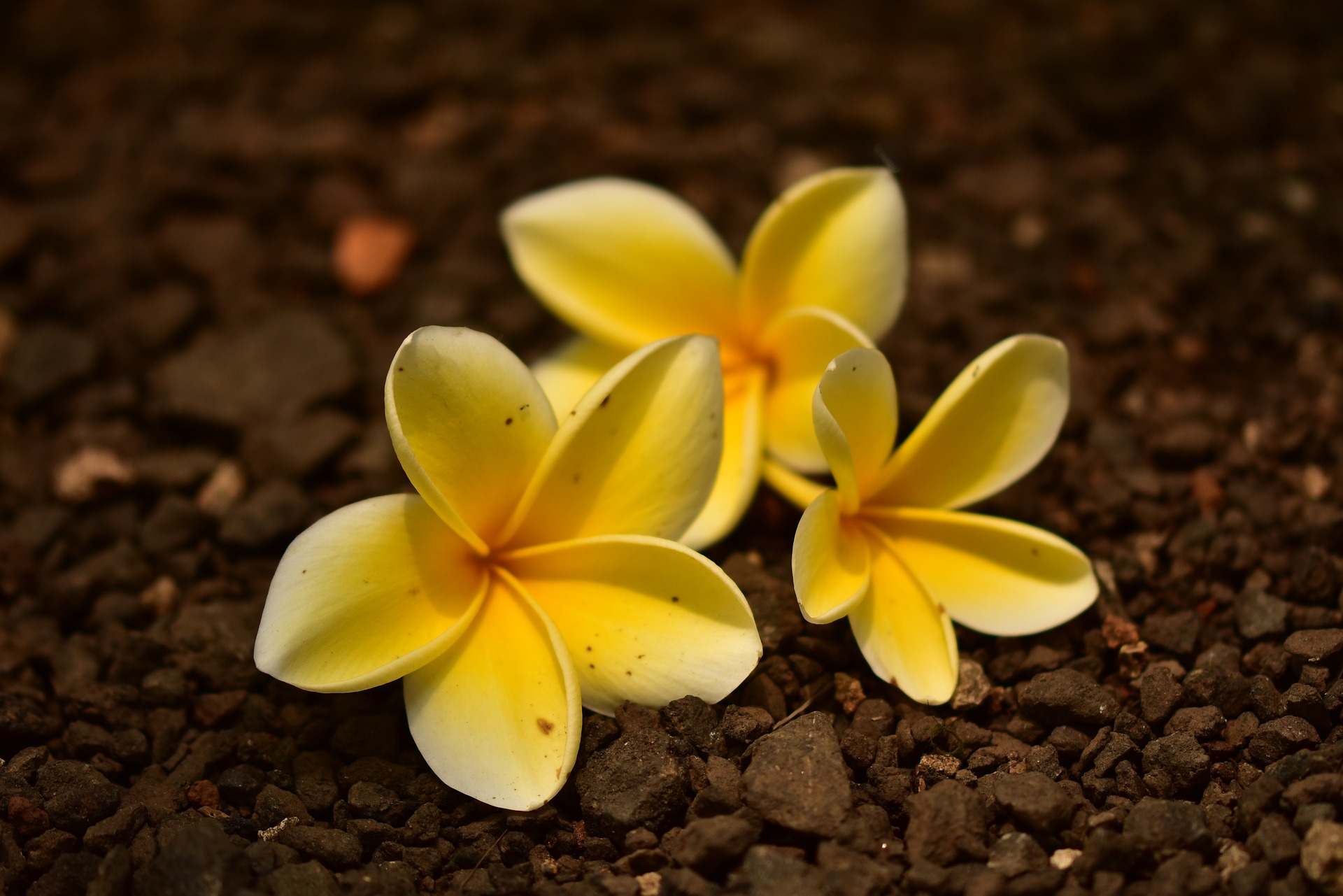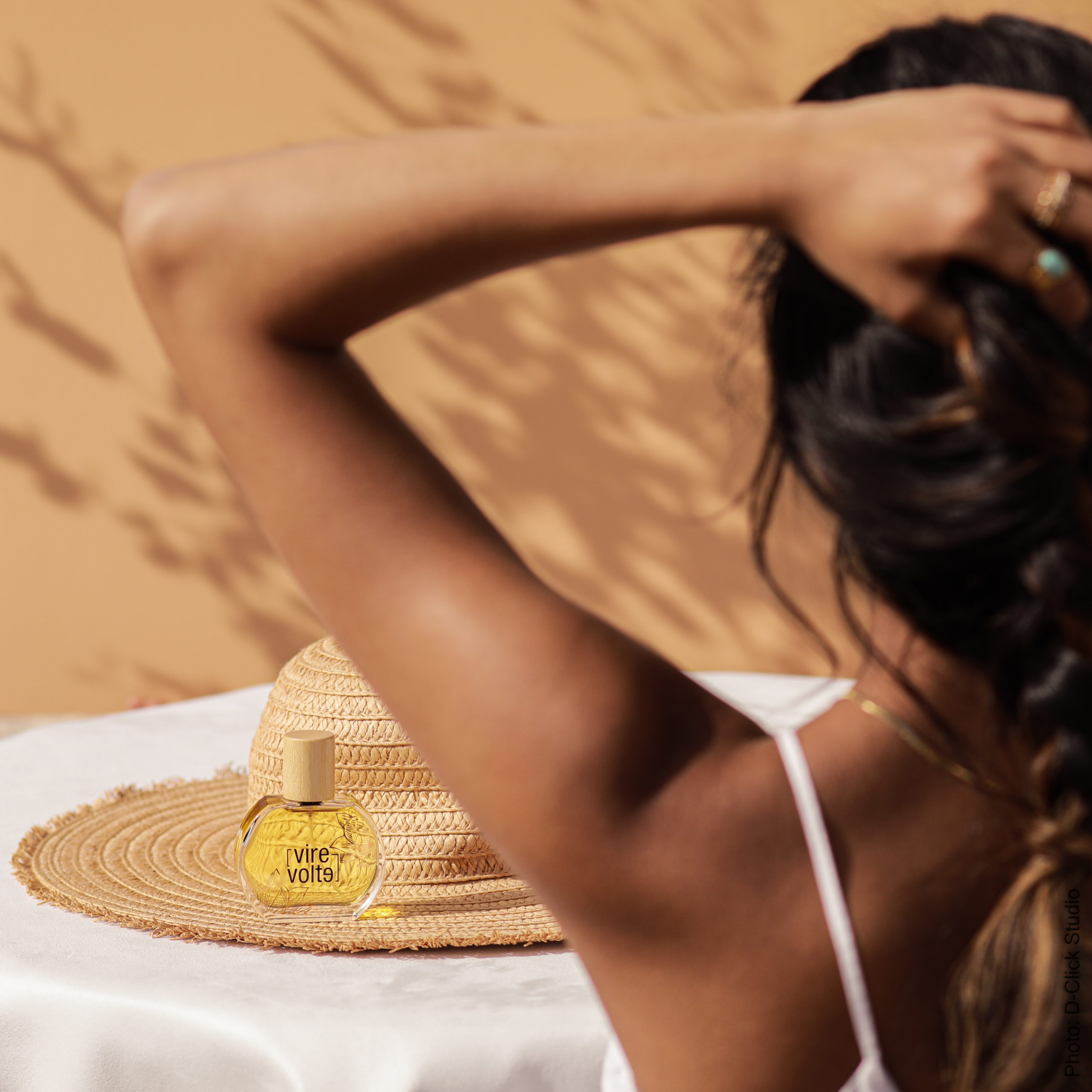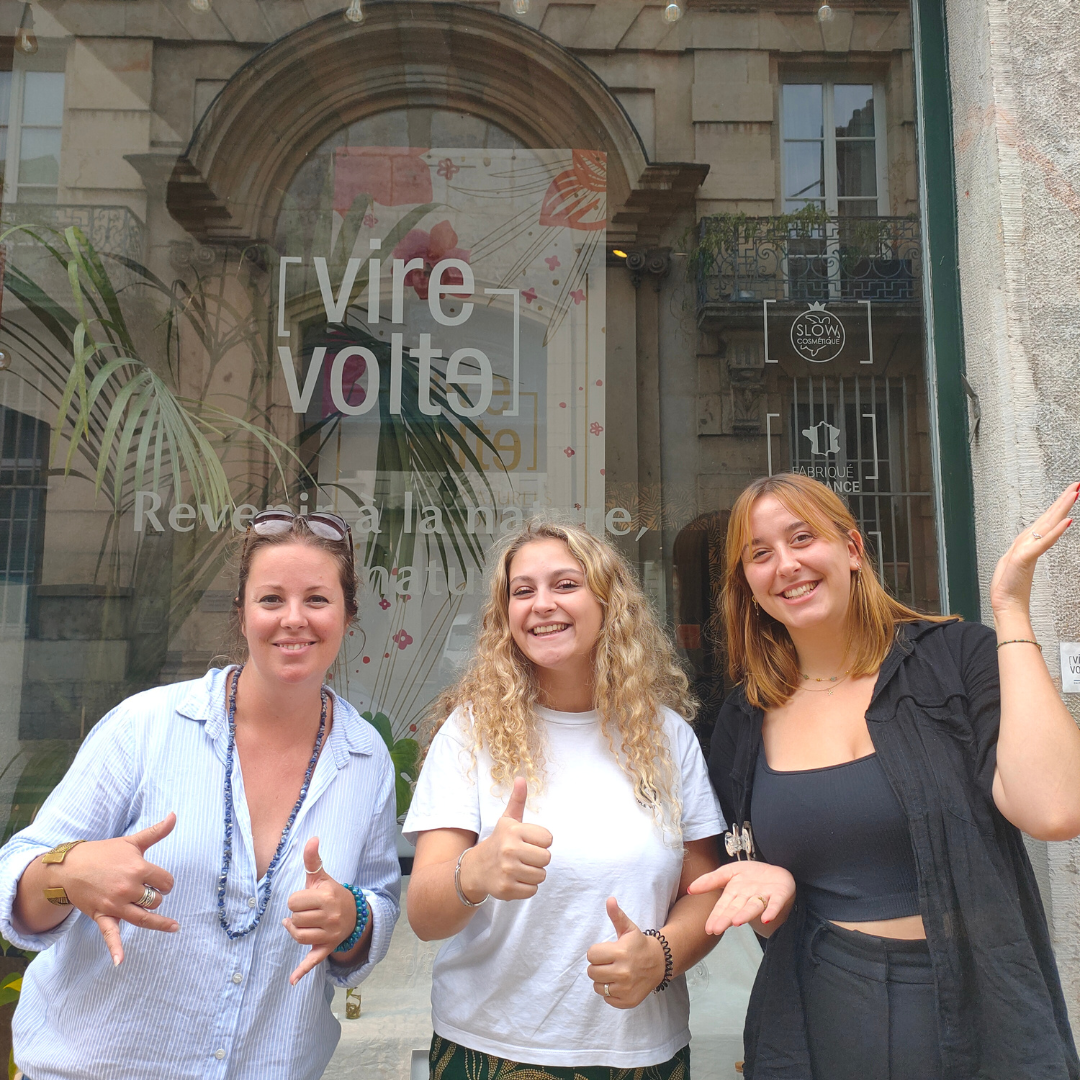Monoï, a "sacred oil" with a sunny look, needs no introduction, its intoxicating scent invites itself into our beach bags every summer and, for enthusiasts, into their cosmetics all year round. It is often associated with products such as sunscreen, hair masks or massage oils. But this essence is more and more present in perfume waters in order to smell it all day long!

In Tahiti, monoi is a real beauty ritual. It is made from the flower of Polynesian flowers: The Tiare. This flower, originally called "Gardénia tahitensis" has become the emblem of this island like Lavender for Provence. Its name comes from a famous Scottish botanist who botanized a lot in French Polynesia: Gardener.
The Gardenia was discovered during explorations, more precisely during Captain Cook's second voyage. It has become the emblem of the island of Tahiti because it is customary for a necklace of Tiare flowers to be placed around the neck of each traveler landing on the island.
Although its smell is often associated with jasmine, Gardenia has an intoxicating scent that remains fresh. In the form of a small shrub, its leaves are glazed, its flowers are yellow or white. There are other kinds of Gardenia than that of Tahiti, all have fragrant flowers:
To obtain the precious fragrant nectar, it is not enough to extract the essential oil from the flower. The Tiare flower is macerated in coconut oil from the grated and fermented fruit. The macerate is then exposed for three weeks to the sun, this process will then give the famous monoi oil.
Tahitian tiare flowers are picked when they are still just buds and used the day after harvest. In general, a minimum of ten buds are needed for one liter of coconut oil.

Thereafter, it is left to macerate in the sun for three weeks. It is important that the origin of the nuts is of coral origin, from the Cocos Nucifera coconut tree and that they are sufficiently mature. They are then picked up, split within 48 hours to collect the almond, which is left to dry in the sun for a week until it only contains 10% humidity. They are then placed in jute bags, under the name of copra and are finally sent to the oil mill in Tahiti. The fruit is crushed into flour, heated to 125°, and finally cold pressed, which gives a first pressing oil.
Once the maceration is finalized, at the end of the three-week period, the macerate is decanted, filtered, then added with a natural or chemical antioxidant. After a final filtration, the monoi is obtained, which can be flavored with other extracts of locally harvested plant species (vanilla, frangipani, ylang-ylang, sandalwood, etc.).

Once the maceration is finalized, at the end of the three-week period, the macerate is decanted, filtered, then added with a natural or chemical antioxidant. After a final filtration, the monoi is obtained, which can be flavored with other extracts of locally harvested plant species (vanilla, frangipani, ylang-ylang, sandalwood, etc.).
The process explained is an ancestral production, common to all monoi producers in Tahiti. Usually the Hermit Crab's abdomen is used to speed up the fermentation of oil, but this controversial process for animal suffering is being practiced less and less.
Nowadays, monoi has been widely exported, especially in Europe where it is used as a tanning oil and prevents dehydration of the skin in the sun. Although it does not protect against ultraviolet rays, it is very successful with the female target. In Polynesia, this fatty substance is used more as massage oil or moisturizer for the hair of Tahitian women.
Monoi, beyond being a scented oil, has many virtues:
In religious rituals in French Polynesia, Monoi is used as a purifier, for anointing children or for embalming. Beyond these spiritual aspects, this oil has many properties in cosmetics and dermatology.
Like shea butter or jojoba oil, it repairs dry and damaged hair. Monoi protects the skin, especially its epidermis. It is widely used in Polynesia for baby skin, which proves that it has excellent qualities in terms of dermatological tolerance. This oil is moisturizing in a lasting and progressive way with an effect between 4 and 6 hours.
Due to the deployment of counterfeits, monoi has an appellation of origin officially set up in 1992, thus recognizing its exceptional properties. This appellation is strictly “reserved for the product made in French Polynesia in accordance with local, loyal and constant customs, by maceration of Gardenia Tahitensis flowers of Polynesian origin, called Tiaré, in refined copra oil. »
For many years now, perfumes composed of Tahitian monoi notes have charmed more and more consumers. This fragrance is characterized by notes of coconut, tiare flower and vanilla; scents reminiscent of sunny holidays!
On its note bases, each brand introduces its own variations. For the eau de parfum Orée Dorée de Virevolte, this facet of monoi is built around Ylang ylang, white wood, hot sand, etc.
Previously, this kind of perfume was considered heavy and consumed only during sunny days. Today, the smell of monoi has settled into our daily lives and never ceases to amaze us!


End of the Virevolte adventure
Do not hesitate to consult the list of our resellers if you wish to buy one of our perfumes.
Julie Desoomer
